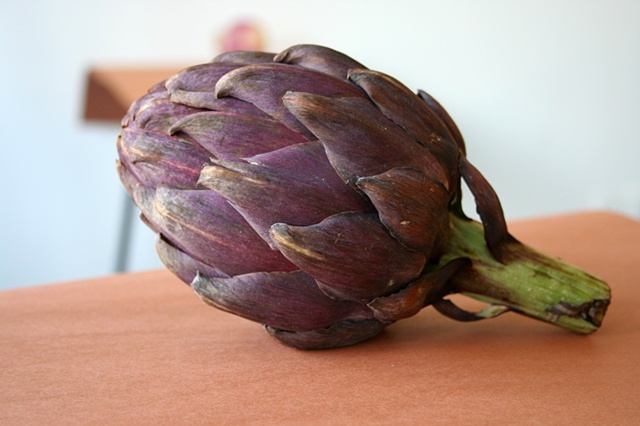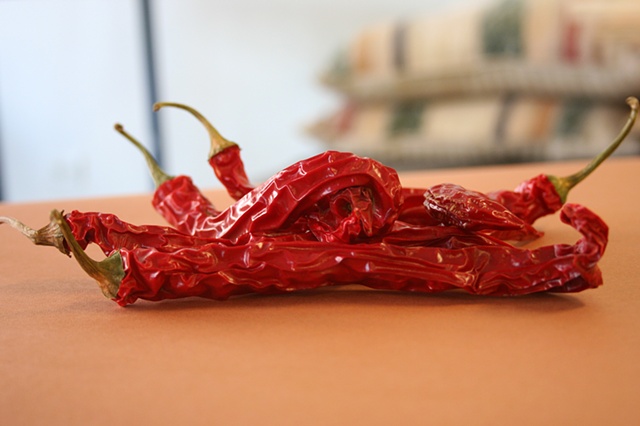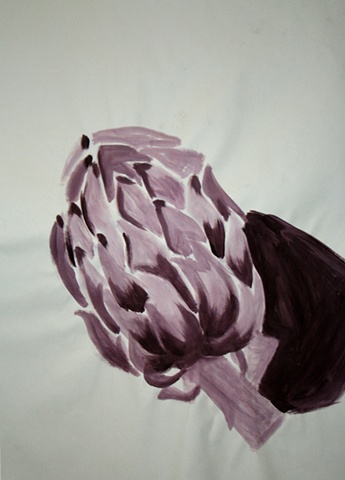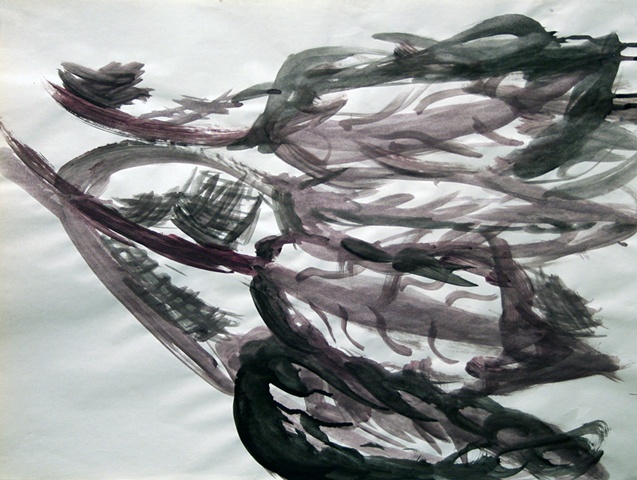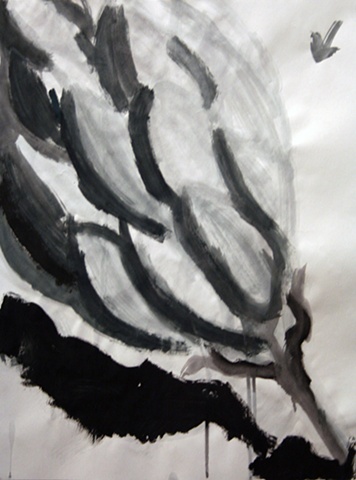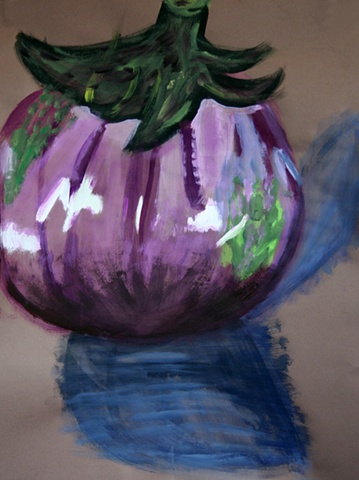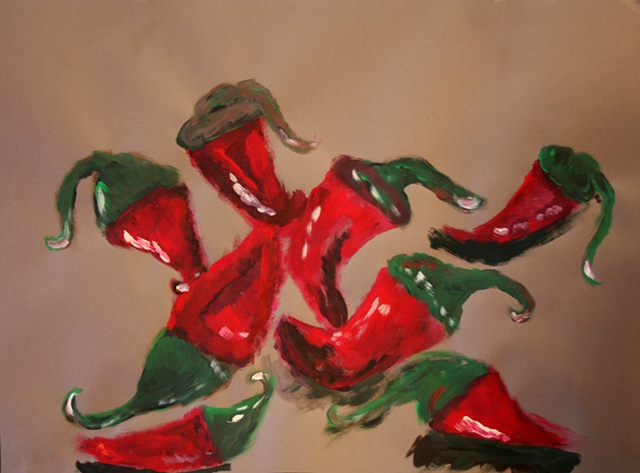Wk 4 Expressive Still Lifes
Having engaged pure painting as mark making and as color harmonies, the (de)Generate artists explored rendering three-dimensional forms. We looked for vegetables with beautiful forms to use as still life objects. The colors found in purple cabbage, dried hot red peppers, Swiss chard, eggplants, and artichokes inspired students to explore the expressive qualities of everyday objects.
To begin the day, the painters viewed a slide show of Expressionist paintings—noticing how the artworks utilized aspects of realist painting to create three-dimensional illusions while using distortion of form and color to create powerful expressive qualities. Some of the artists included in the show were Edvard Munch, Gabriel Münter, Ernst Ludwig Kirchner, Giorgio de Chirico, and Marc Chagall. After the slide show, the (de)Generate artists painted three sketch paintings in order to warm up their body, to charge their energy, and to learn to “take in” the entire form. Each painting lasted from 30 seconds to two minutes. While the students painted, the teachers moved through the studio encouraging them to paint bigger, bolder, and more expressively.
Each artist painted with a single hue—mixed with browns, blacks, and complements to achieve a deep, dark version of the color. This prepared the student painters for creating the shadow colors in more extended studies.
Once the painters had formed a better understanding of the form of their vegetables through the fast sketches, they made one twenty-minute painting on grey paper using the same limited color palette. Spending more time with their vegetables, the students observed and recorded the small details and textural qualities.
The (de)Generate artists ended their day with a final painting of the vegetable, utilizing a limited color palette of four hues and black and white. These paintings were done on deep-colored paper so that the forms emerged from darkness. Painters had an hour and a half to make a painting that rendered form, yet was expressive and energetic. Drawing together lessons learned on energized mark making, color theory, and rendering 3-D form, the painters demonstrated that there is no inherent contradiction between verisimilitude and expressiveness.


